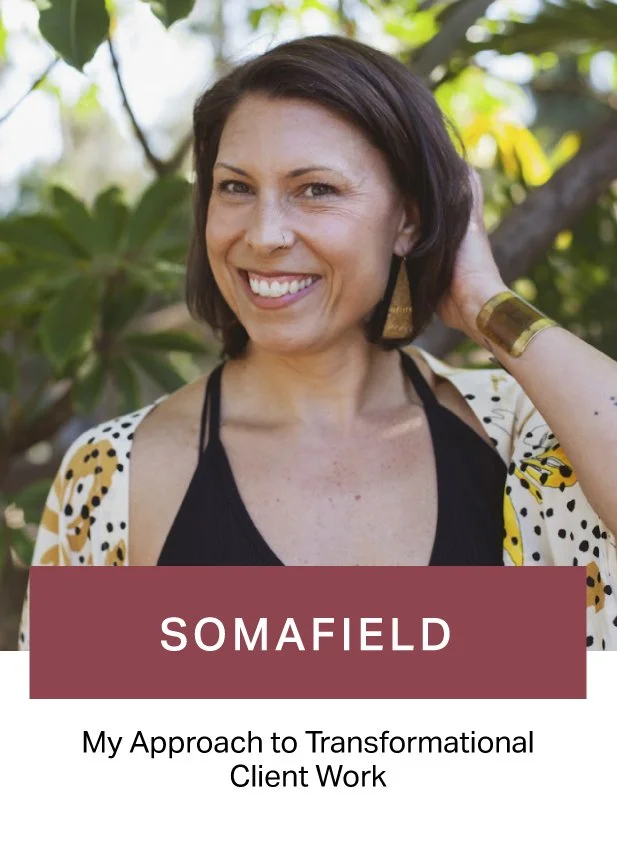Working Experientially + Somatically
As coaches and therapists, many of us are trained to listen for patterns, to ask powerful questions, to reflect back insight. And insight is important — it orients, it illuminates. But insight alone doesn’t always transform, as we discussed last in regards to psychoeducation.
Real transformation often comes when we help our clients feel their way into something new — not just understand it, but embody it.
This is where experiential and somatic work comes in, which is the 7th core principle of The SomaField Approach to Transformational Client Work.
Experiential work invites clients into a direct, in-the-moment encounter with their inner world. Instead of simply talking about something, we help them be with it — in their body, in their breath, in their tone of voice, posture, sensation, and emotion. We make space for the actual experience of what’s happening, right now, in their system.
When we combine this with a somatic lens — attuning to the body’s language, rhythms, and intelligence — we create the conditions for deep integration and healing. The body, after all, holds what the mind alone can’t always access.
And the beautiful thing? You don’t have to be a somatic therapist to begin including this in your work. You just have to be willing to slow down, get curious, and invite the body into the room.
A Simple Practice: “Let’s Just Notice”
One of the simplest ways to begin working experientially and somatically is to get in the habit of pausing and gently directing attention inward.
When a client shares something significant — an old story, a painful memory, or even a moment of breakthrough — you might say:
“Let’s just pause for a moment and notice what’s happening in your body right now.”
Or:
“As you say that, what do you feel in your chest? Your belly? Your shoulders?”
Or even:
“Would it be okay to stay with that feeling for a few breaths, and just notice what it wants you to know?”
There is no right answer to these prompts. The purpose of this is to help the client register their own emotional experience inside their body and to allow space for it to develop. This kind of presence can be profound. It invites the client to go beyond narrating the past and instead inhabit their experience. From that place, something deeper can emerge — a sense of truth, a shift in state, a new possibility.
And just as importantly, it’s an invitation for you to notice what’s happening in your body, too. Our own somatic cues — a sudden tightness in the chest, a wave of sadness, a sense of warmth or agitation — can offer valuable information. They might reflect something we’re holding, or something the client’s system is subtly communicating. When we include our own bodies as instruments of attunement, we become more precise, more grounded, and more available in the moment.
Why This Matters
The somatic and experiential dimensions of client work are not extra — they’re essential. Especially when we’re working with trauma, attachment, or big transitions, the body often holds the key to what words can’t say.
As practitioners, when we learn how to gently guide attention inward — not to analyze, but to be with — we expand what’s possible. We meet our clients not just in their minds, but in their whole system. And when we include our own embodied awareness in that process, the field becomes even more alive, more honest, and more transformative.
That’s where the real work happens.
If this post resonates, I’d love for you to share it with another practitioner who might appreciate this way of working. And if you're curious to deepen your capacity in this kind of work, I’ve got some things coming that might be just for you. Stay tuned.




